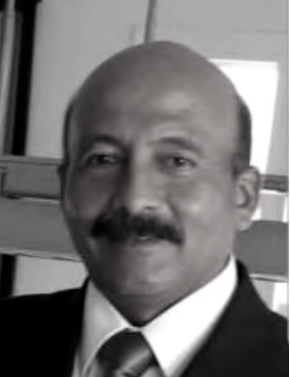LA SECURITIZACIÓN DE LAS FUERZAS ARMADAS
Un nuevo enfoque, alternativo para la Seguridad
Artículo N° 20 de la Revista Xauxa N° 01, Año I
Resumen: Si este enfoque inédito le hace pensar, criticar, conversar sobre este tema, habremos logrado el primer objetivo trazado al iniciar este trabajo. Este documento es un ensayo que pretende hacer ver al lector que si bien es cierto podremos tener Fuerzas Armadas (FFAA) con buenos recursos humanos y materiales para enfrentar amenazas externas muy difíciles, poco podrán hacer estas FFAA si en el interior del país se reactiva la subversión y el gobernante de turno ordena que las FFAA repriman dicha organización, pues el costo será muy alto en lo social, económico y político. Por ello, en países donde el Proceso de Consolidación está aun en marcha, la gestión del aparato estatal es débil o ineficiente; la subversión que es una amenaza latente y los conflictos sociales son frecuentes; los líderes políticos buscan la adhesión de la población, el Estado no puede perder esta batalla, pues perderla podría significar la desaparición del sistema político por decir lo menos. Ya Sun Tzu dijo hace aproximadamente 2,500 años: “El supremo arte de la guerra es someter al enemigo sin luchar”; se deduce que es mejor actuar preventivamente, es decir atacando causas en vez de atacar efectos. Para ello, se presenta este documento, basado en la situación existente del Perú cuyo Estado tiene serias deficiencias en la gestión pública y cuya ineficiencia ocasiona un aumento en las brechas sociales, las cuales son caldo de cultivo para la subversión y los conflictos sociales. Ante la creciente inseguridad ciudadana, existe una corriente que está a favor de la securitización de las FFAA, este documento puede servir para reflexionar en el hecho de que emplearlas en Apoyo al Desarrollo es más conveniente al punto de vista social y económico, preservándolas así para tareas que requieran un empleo más contundente y decisivo. El tiempo de actuar es AHORA […]
Abstract: If this unprecedented approach makes you think, criticize, talk about this topic, we will have achieved the first objective set at the beginning of this work. This document is an essay that aims to make the reader see that although it is true that we will be able to have Armed Forces (FFAA) with good human and material resources to face very difficult external threats, these Armed Forces will be able to do little if in the interior of the country the subversion and the ruler of the day orders the Armed Forces to repress said organization, since the cost will be very high socially, economically and politically. Therefore, in countries where the Consolidation Process is still underway, the management of the state apparatus is weak or inefficient; subversion is a latent threat and social conflicts are frequent; political leaders seek the adhesion of the population, the State cannot lose this battle, because losing it could mean the disappearance of the political system to say the least. Already Sun Tzu said approximately 2,500 years ago: “The supreme art of war is to subdue the enemy without fighting”; It follows that it is better to act preventively, that is, by attacking causes instead of attacking effects. For this, this document is presented, based on the existing situation in Peru, whose State has serious deficiencies in public management and whose inefficiency causes an increase in social gaps, which are a breeding ground for subversion and social conflicts. Given the growing citizen insecurity, there is a current that is in favor of the securitization of the Armed Forces, this document can serve to reflect on the fact that using them in Support of Development is more convenient from the social and economic point of view, thus preserving them for tasks that require a more forceful and decisive employment. The time to act is NOW […]
Palabras claves: Defensa Nacional, Desarrollo Nacional, Militares, Seguridad Interna.
Keywords: National Defense, National Development, Military, Internal Security.

Elaborado por

Oscar de Jesús Reto Otero
General de División EP (r)
Publicado el 30 de Agosto del 2020
DESCARGAR ARTÍCULO

